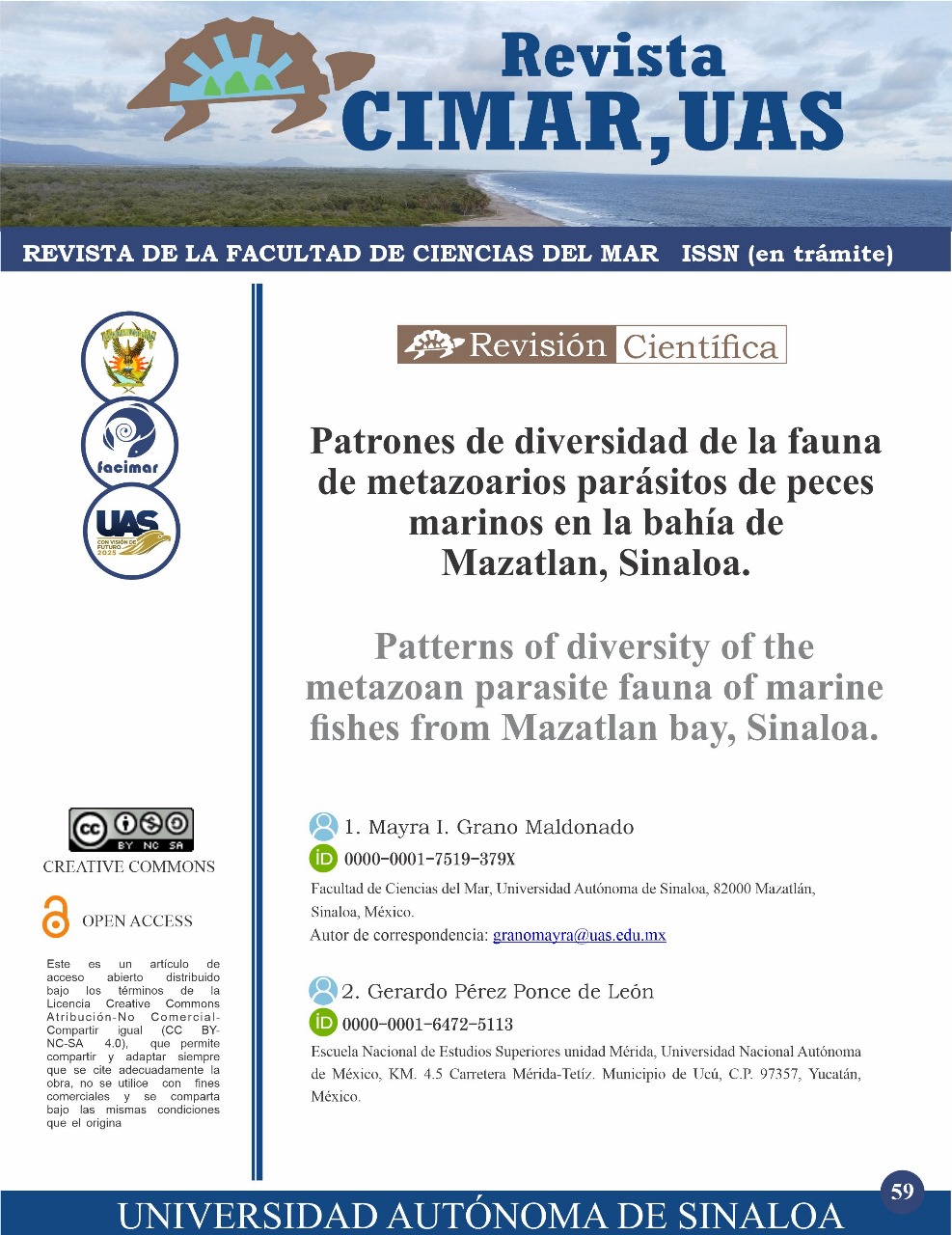Patterns of diversity of the metazoan parasite fauna of marine fishes from Mazatlán Bay, Sinaloa.
Keywords:
Parasites, Fish, Biodiversity, Pacific Ocean, TaxonomyAbstract
Mazatlan Bay is an area that attracted the interest parasitologists in the past to study the metazoan parasite fauna of marine fishes. Helminths started to be reported since the 1950s, and copepods since the 1960s. In the last years there has been a renewed interest in studying these organisms. In this review, the information about the metazoan ecto and endoparasites of marine fishes of Mazatlan Bay is presented. The compilation of data was accomplished using databases and conducting literature searches through the ISI Web of Science. All reports were retrieved, carefully revised and the information regarding each parasite taxon was updated according to the current taxonomic treatments. Only the valid scientific names were used irrespective of the name used in the original record. Three lists are presented. Two parasite-host lists containing all the records of species/taxa of either helminths or crustaceans are presented; lists are organized alphabetically by parasite group, and authority's name and publication year, site in the host, host species, and bibliographical reference for each record. The second is a host-parasite list where all the metazoan parasites parasitizing each host species (in alphabetical order by family and then species) is shown, indicating the taxonomic group and developmental stage of parasites. In total, 115 taxa of metazoan parasites have been reported, allocated in 92 genera and 51 families, including 91 helminths, 23 copepods and 1 malacostracan isopod. Of the 115 taxa, 95 were identified to species level. Trematodes and monogeneans are the most-well represented groups, with 39 and 34 taxa, respectively. Nineteen new species of parasites have been described, 15 helminths and four copepods. Only 47 fish species, including osteicthyes and chondrichthes have been studied for helminth parasites, allocated in 43 genera and 24 families. The Spotted rose snapper, Lutjanus guttatus, the Pacific sierra, Scomberomorus sierra, and the Orange-side triggerfish, Sufflamen verres as well as the Pacific silverstripe halfbeak, Hyporhamphus naos are the host species with the largest parasite species diversity in the area, with 25, 11, nine and nine taxa/species, respectively. We discuss that the inventory is far from complete and based on the well-known fact that parasites are important components of marine ecosystems, we put forward some general ideas on how to speed up the inventory work in the future, by conducting targeted sampling of fish species and using modern methods of molecular systematics.
Downloads

Downloads
Published
Data Availability Statement
As of December 14, the references and links of the article were available for verification.

 Cada manuscrito está bajo la licencia Atribución-NoComercial-SinDerivadas 4.0 Internacional (CC BY-NC-ND 4.0). Puedes consultar los términos de la licencia en el siguiente enlace:
Cada manuscrito está bajo la licencia Atribución-NoComercial-SinDerivadas 4.0 Internacional (CC BY-NC-ND 4.0). Puedes consultar los términos de la licencia en el siguiente enlace: 